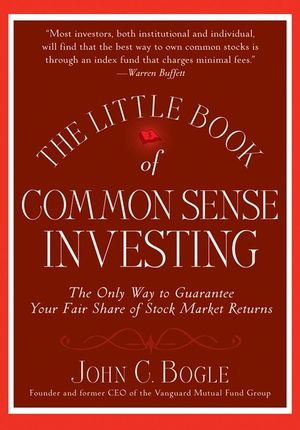This is a direct copy paste job from my blog
Book Review - The little book of common sense investing by John C Bogle

This is the 4th Book on “Little Book, Big Profit” series that I read. An advanced warning to reader that this review is more of a critical view of Bogle’s approach to investing.
I had a wrong conception about this book is that this book is about goodness of systematic investment plan (SIP) type of investment; well it turn out to be about investing in an index mutual fund.
From page 10 or so, I started feeling that this book, its philosophy are not for me. Still I persisted throughout the book hoping to get something; but alas I could find pretty much nothing for me. May be there are something for 1st time investor who is paying heavily for investment, but for someone who believe in investing for himself, I no brainer no-use book for sure.
So let me explain on whet point I agree with him
-
Mutual Fund, by design are a costlier investment option becuase of entry/exit load, transaction cost, and fund management fee
-
Majority of Mutual fund tends to lag behind sensex because of herd mentality. In India it get severe because here we don’t have star fund manager culture
-
For 1st time investor, without much knowledge of stock market, it is a good approach to invest in index fund, that too in a SIP approach
And the list of reasons why it doesn’t make sense to me -
Stock market investing is a zero sum game : This logic seems ridiculous as this argument can be extended to any kind of market/transaction where someone sell and some buy
-
Beating Index fund is difficult in long run :
1. Hundreds after hundreds example of people/stocks beating sensex return. Warren Buffet, Peter Lynch, Carlie Munger, and thousand other have discovered strategies to get returns that have beaten sensex years after year
2. John Seigel of Wharton School of Business has found out that removing high PE stocks from sensex, and adding some midcap stock can beat sensex hands down
3. Buying beaten down stock, available at ridiculously cheap valuation has been the cornerstone of value investing and are known for getting market beating return
4. Growth investing, which tells us way to find out higher growth stock, and the strategy to get out of them at correct time, can outperform sensex at a decent margin -
Use of statistical data to justify your observation:
1. Statistics is a deadly science. The reason why I tell is that it is very easy to immerse a layman into details. Real world data tends to have a multi-dimensionality build into it. The actual presentation is a projection of the same. There are many such projections possible and hence one can choose the projection that matches his theory.
2. Statistics can be used only for those variables where we can measure things. And as he doesn’t have reliable data for stock performance of various strategies, hence he just choose to ignore it. Classic academic approach. -
Quoting folks who are known for different approach of investing
1. The author suitably choosen quotes of other people like WB, Charlie Munger to justify his reasoning. The truth is these folks whose quotation is quoted by him, haven’t practiced index based approach, and if they have gone in index path, they wouldn’t have reached a stage worth quoting in a book on index investing. -
The list can go on and on … Hence I retire
If you can invest directly in stock market, and have achieved sensex beating return, than you can safely avoid this book, as there is nothing for you. If you are not able to beat if, well than the approach written in this book might be one of the approach you can follow.
Happy Investing !!!
